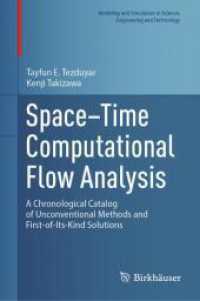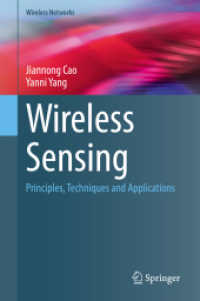Full Description
This is an engaging study of the mental lexicon: the way in which the form and meaning of words is stored by speakers of specific languages. Fortescue attempts to narrow the gap between the results of experimental neurology and the concerns of theoretical linguistics in the area of lexical semantics. The prime goal as regards linguistic theory is to show how matters of lexical organization can be analysed and discussed within a neurologically informed framework that is both adaptable and constrained. It combines the perspectives of distributed network modelling and linguistic semantics, and draws upon the accruing evidence from neuroimaging studies as regards the cortical regions involved. It engages with a number of controversial current issues in both disciplines. This text is intended as a tool for linguists interested in psychological adequacy and the latest advances in Cognitive Science. It provides a principled means of distinguishing those semantic features required by a mental lexicon that have a direct bearing on grammar from those that do not. A Neural Network Model of Lexical Organisation is essential reading for researchers in neurolinguistics and lexical semantics.
Contents
Part 1: The Basics; 1. Introduction; 1.1 The mental lexicon; 1.2 The nature of the model; Some sample word templates 2.1 A noun template; 2.2 Nouns versus verbs; 2.3 Other parts of speech; 2.4 A "derived" word; 3. The production and comprehension of simple sentences; 4. Expansion to a complex sentence; 4.1 Some new word types; 4.2 Production of a complex sentence - and an inference; 5. Further dimensions of the model; 5.1 Relating event structures; 5.2 Nominalizations and abstract nouns; 5.3 Some loose ends; Summary of Part 1; Part 2: Applications; 6. Semantic fields and lexical categories; 7. Compositionality; 7.1 Nominal composition; 7.2 Verbal decomposition; 7.3 More on causal derivation; 7.4 Complex word meaning: a test case for compositionality; 8. Constructions; 9. Polysemy; 9.1 Polysemy and context; 9.2 An excursion into metaphor and metonymy; 10. Some further questions of qualia; 11. Extensions to languages of different morphological type; Summary of Part 2; Part 3: Cognitive Justification of the Model; 12. The interfacing of grammar and lexicon; 12.1 Grammar templates; 12.2 The realization of grammatical and semantic features by call trees; 12.3 How call trees and combination matrixes might function; 13. The neural representation of context; 14. Acquisition; 15. Prospective conclusions; 15.1 The justification for separating affordance levels; 15.2 Potential (dis)confirmation of the model; Appendix 1: The relationship to Burnod's neurological model; Appendix 2: Paradigmatic features of English words; Appendix 3: Sample derivations List of templates; Graphic conventions as first introduced; References; Index.




![Optical Nanospectroscopy. Volume 1-2 [Set Optical Nanospectroscopy, Vol 1+2], 3 Teile (De Gruyter Textbook) (2025. XL, 660 S. 300 b/w and 300 col. ill. 240 mm)](../images/goods/ar/work/imgdatak/31104/311043783X.jpg)



